Afghan cultural policy and infrastructure
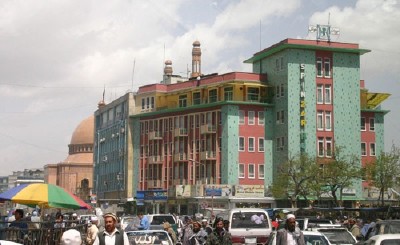
Ministry of Information and Culture
Afghanistan’s Ministry of Information and Culture finds its origins in the Directorate of Independent Media, set up in 1946. After 1978 the Ministry divided into three separate committees: the Cultural Committee, the Press and Distribution Committee, and the Radio and Television Committee. This structure largely survived after 1992, although civil servants appointed by the administration of the Islamic State formed from the various mujahideen factions focussed as much on policing as on cultural development per se. This continued through the period of the Islamic Emirate between 1996 and 2001, when even more stringent restrictions were imposed on culture and entertainment, including the banning of television.
In late 2001, with the formation of a Transitional Administration of the Islamic State of Afghanistan, the Ministry of Information and Culture was given the mandate to manage not only arts, heritage, archives, libraries and media, but also youth affairs and sports.
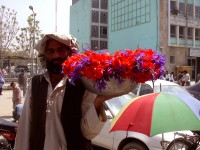 At that time the stated vision of the Ministry was ‘to create an environment where: media......are independent, pluralistic and accessible to Afghan men and women throughout the country; the cultural heritage of Afghanistan is preserved, protected and handed on to young generations of Afghans as a record of the rich human experience and aspirations in their country, so as to foster cultural creativity in all its diversity; and sport serves as a unifying element in society and is accessible to all - in particular children, women and disabled.’
At that time the stated vision of the Ministry was ‘to create an environment where: media......are independent, pluralistic and accessible to Afghan men and women throughout the country; the cultural heritage of Afghanistan is preserved, protected and handed on to young generations of Afghans as a record of the rich human experience and aspirations in their country, so as to foster cultural creativity in all its diversity; and sport serves as a unifying element in society and is accessible to all - in particular children, women and disabled.’Today the Ministry of Information and Culture is structured around four sectoral areas: Culture and Heritage; Publications and Media; Tourism and Administration; and Youth Affairs; each of which is overseen by a Deputy Minister.
The largest department is that of Culture and Heritage, which oversees the development of arts (music, theatre, film, literature, fine art), archives, libraries and heritage (museums and historic monuments). Official institutions managed by the department include Afghan Film, Kabul Public Library, the Afghan Institute of Archaeology, the Cultural Heritage Preservation Centre, the Ghulam Mohammad Maimanagi Afghan Traditional Arts Training School Gallery the National Archives, the National Art Gallery, the National Museum and the International Centre for Kushan Studies.
The Office of the Deputy Minister for Publications and Media oversees the activities of Radio-Television Afghanistan (RTA), Bakhtar News Agency, Beihagi Publishers and the printing company Azady Press, as well as publishing various newspapers, magazines and journals including Anis Daily, Hewad Daily, Islah Daily and Kabul Times.
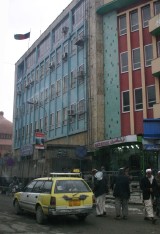 The Office of the Deputy Minister for Tourism and Administration is responsible for the development and promotion of the Afghan tourism industry as well as for the internal management of the Ministry of Information and Culture.
The Office of the Deputy Minister for Tourism and Administration is responsible for the development and promotion of the Afghan tourism industry as well as for the internal management of the Ministry of Information and Culture.The Ministry also incorporates an Office of the Deputy Minister for Youth Affairs which is committed to helping young people participate in development and in the governance of Afghanistan's democratic institutions and seeks to tap their constructive and creative energies by developing activities for youth and involving them in various nation-building activities.
International relations is handled by the Planning and External Affairs Department within the Minister's Office.
Provincial government infrastructure for culture
Afghanistan is currently divided into 34 provinces, each of which is run by a provincial administration overseen by a Governor. These provinces are:
Badakhshan Province (provincial capital Faizabad)
Badghis Province (provincial capital Qala-e-Naw)
Baghlan Province (provincial capital Baghlan)
Balkh Province (provincial capital Mazar-e-Sharif)
Bamiyan Province (provincial capital Bamiyan)
Daykundi Province (provincial capital Nili)
Farah Province (provincial capital Farah)
Faryab Province (provincial capital Maymana)
Ghazni Province (provincial capital Ghazni)
Ghor Province (provincial capital Chagcharan)
Helmand Province (provincial capital Lashkar Gah)
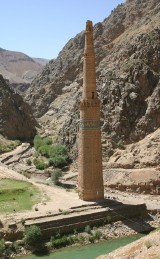 Herat Province (provincial capital Herat)
Herat Province (provincial capital Herat)Jowzjan Province (provincial capital Sheberghan)
Kabul Province (provincial and national capital Kabul)
Kandahar Province (provincial capital Kandahar)
Kapisa Province (provincial capital Mahmud-e-Raqi)
Khost Province (provincial capital Khost)
Kunar Province (provincial capital Asadabad)
Kunduz Province (provincial capital Kunduz)
Laghman Province (provincial capital Mehtarlam)
Logar Province (provincial capital Pul-e-Alam)
Nangarhar Province (provincial capital Jalalabad)
Nimruz Province (provincial capital Zaranj)
Nuristan Province (provincial capital Parun)
Paktia Province (provincial capital Gardez)
Paktika Province (provincial capital Zareh Sharan)
Panjshir Province (provincial capital Bazarak)
Parwan Province (provincial capital Charikar)
Samangan Province (provincial capital Aibak)
Sar-e-Pol Province (provincial capital Sar-e-Pol)
Takhar Province (provincial capital Taloqan)
Uruzgan Province (provincial capital Tarin Kowt)
Wardak Province (provincial capital Maidanshahr)
Zabul Province (provincial capital Kalat)
Within each provincial administration are departments reflecting the principal line Ministries in Kabul, including Information and Culture. The 34 Provincial Offices of Information and Culture are responsible for implementing national policies on information, culture, tourism and youth affairs, and are provided with guidance on policy and operational issues by the relevant sectoral units in the Ministry in Kabul.
Other ministries
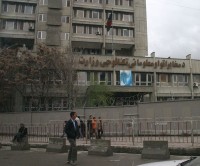 While the Ministry of Information and Culture exercises responsibility for press and broadcasting, the development of Information and Communication Technology (ICT) in Afghanistan (including policies, standards, legal framework, e-government, data centres, cyber security, cctld, IRs and development projects in the ICT arena) is the responsibility of the Ministry of Communications and Information Technology (MCIT).
While the Ministry of Information and Culture exercises responsibility for press and broadcasting, the development of Information and Communication Technology (ICT) in Afghanistan (including policies, standards, legal framework, e-government, data centres, cyber security, cctld, IRs and development projects in the ICT arena) is the responsibility of the Ministry of Communications and Information Technology (MCIT).The Ministry of Education oversees the activities of primary, secondary and vocational training institutions, including two cultural training colleges - the Institute of Local Industry and Construction and the Afghanistan National Institute of Music (ANIM).
All of Afghanistan's universities are responsible to the Ministry of Higher Education.
The Ministry of Foreign Affairs has a Cultural Affairs Department within its Protocol Directorate, which oversees cultural activities in the context of international relations.
Media, Culture and Youth Sector Strategy for 2007-2008 to 2012-2013
The most recent statement of Afghan government policy in the field of information, culture, youth and tourism may be found in the Media, Culture and Youth Sector Strategy for 2007-2013, incorporated in the Afghanistan National Development Strategy (ANDS) for 2007/8-2012/3.
 The ANDS was developed by the government of Afghanistan with the assistance of the international community as a guiding document for achieving Afghanistan's reconstruction goals. The ANDS articulates the priorities of the government of Afghanistan in four major areas: (i) security; (ii) governance, rule of law, and human rights; (iii) economic and social development; and (iv) counter narcotics. The Media, Culture and Youth Sector Strategy was prepared by the Ministry of Information and Culture in consultation with its domestic and international partners and sets out both short-term and mid-term strategies for these sectors.
The ANDS was developed by the government of Afghanistan with the assistance of the international community as a guiding document for achieving Afghanistan's reconstruction goals. The ANDS articulates the priorities of the government of Afghanistan in four major areas: (i) security; (ii) governance, rule of law, and human rights; (iii) economic and social development; and (iv) counter narcotics. The Media, Culture and Youth Sector Strategy was prepared by the Ministry of Information and Culture in consultation with its domestic and international partners and sets out both short-term and mid-term strategies for these sectors.Culture
In the field of culture the Media, Culture and Youth Sector Strategy sets out the vision 'to preserve and protect the cultural heritage so that it can be handed on to new generations to foster pride in the nation’s achievements and cultural creativity.'
Overarching needs identified for the cultural sector include:
 (i) redefinition of the role of public cultural institutions with a view to enhancing the delivery of public cultural services throughout the country and creating a conducive environment for the development of private cultural initiatives;
(i) redefinition of the role of public cultural institutions with a view to enhancing the delivery of public cultural services throughout the country and creating a conducive environment for the development of private cultural initiatives;(ii) the placing of greater value on artists and intellectuals;
(iii) an end to discriminatory practices against women and encouragement of their active participation in arts and culture;
(iv) the creation of legal and policy frameworks to guarantee and respect the cultural rights of every Afghan citizen;
(v) the inclusion of minorities and disadvantaged groups in social, political and cultural life;
(vi) urgent action to save the country’s endangered cultural heritage (monuments, sites, audio-visual heritage, intangible heritage) from destruction;
(vii) promotion of the cultural and creative industries (including performing arts, visual arts, crafts and design, film and video, radio and television, printing and publishing, software and computer services) with a view to creating employment and wealth.
Agreed actions include (amongst others) the following:
Archives
- constructing a new National Archives building
Film
- developing the capacity of the Afghan cinema industry and encouraging women film makers
Folkloric arts
- undertaking the systematic academic assessment and documentation of traditional folklore
Heritage
- compiling a comprehensive inventory of cultural property
 - making a concerted diplomatic and legal effort to tackle the ongoing problem of illicit traffic of cultural property and secure the return of cultural items that have been taken from the country
- making a concerted diplomatic and legal effort to tackle the ongoing problem of illicit traffic of cultural property and secure the return of cultural items that have been taken from the country- building capacity within the National Museum, developing a strategy for the establishment of thematic ethnology, anthropology, science and technology, handicrafts and community museums, establishing a provincial museums network, and developing a museum studies programme in Afghanistan
- building capacity within the Afghan Institute of Archaeology, exploring and documenting archaeological sites and undertaking scientific interventions to safeguard, maintain and restore major historical and cultural monuments
Language and literature
- researching and documenting local languages and traditions
Performing arts
- researching and documenting Afghan music
- developing Kabul Theatre and a network of provincial theatre groups
- developing the circus arts by expanding upon the work of the NGO Afghan Mobile Mini Circus for Children (MMCC)
Visual arts
- together with the support of the Ministry of Higher Education developing training and education in the figurative arts, including painting, sculpture and calligraphy
Media
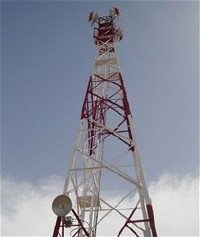 The government's vision in this sector is for media that are 'independent, pluralistic and accessible to Afghan men and women throughout the country, thereby promoting an open and democratic society.'
The government's vision in this sector is for media that are 'independent, pluralistic and accessible to Afghan men and women throughout the country, thereby promoting an open and democratic society.'An additional objective is the promotion of innovative applications of information and communication technology for sustainable development within the overarching objective of ‘Building inclusive knowledge societies through information and communication', although in this instance it is the Ministry of Communications and Information Technology (MCIT) which is responsible for implementation - see Media - Internet.
Overarching needs identified for the media sector include
(i) professional in-service training throughout the media sector;
(ii) new printing press and broadcasting equipment.
Agreed actions include (amongst others) the following measures:
- the transformation of state-owned media into editorially-independent public services able to reach the majority of the population with international-standard journalistic contents and a strong commitment to the strategic goals of the country in the fields of public health, education, security, cultural diversity, gender, national unity, specific Afghan values and homogeneous national development;
- training and capacity building within Afghan media institutions;
- the development of gender-sensitive policy and legal frameworks in support of independent and pluralistic media;
- preparation of guidelines relating to journalism ethics for the Afghan media;
- the expansion of provincial TV and radio broadcasting;
- a review of the state newspapers to consider the desirability of fewer newspapers with enhanced coverage and better quality;
- preparation and implementation of an affirmative action plan for women and media;
- rationalisation of the structure of the Bakhtar News Agency and expansion of its services in provinces;
Youth
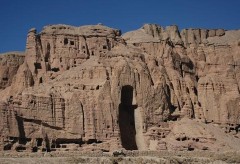 In youth the vision is 'for young people to be confident that they have a stable and prosperous future in Afghanistan.'
In youth the vision is 'for young people to be confident that they have a stable and prosperous future in Afghanistan.'A National Youth Programme has been developed with inputs from eight ministries and seven United Nations agencies with the aim of increasing the participation of youth in governance, recovery, development and peace-building of Afghanistan. It provides young women and men with enhanced capacities, education, and recreation and employment opportunities.
Tourism
Although not covered in the Media, Culture and Youth Sector Strategy, tourism development is mentioned in the Ministry of Information and Culture annex to the Afghanistan National Development Strategy (ANDS) for 2007/8-2012/3 and a separate Draft National Tourist Strategy was prepared in 2006 with assistance from the Asian Development Bank (ADB). Tourism development remains a priority for the Ministry, with a focus on creating a supportive environment for private-sector activity in this field.
The gap between aspirations expressed in the ANDS and the reality on the ground can be wide. Among other problems, government offices can find it difficult to recruit qualified staff able to implement the objectives of the ANDS, with salaries offered by international organisations usually being significantly higher than those paid in the public service.
Not-for-profit non-governmental organisations (NGOs)
In the Afghanistan National Development Strategy (ANDS) for 2007/8-2012/3, the emergence of a strong civil society is considered a prerequisite for independence, pluralism and vitality in the media and culture sectors. The government’s stated aim is therefore to intervene in only a limited number of areas, in particular legislative and policy development, to promote freedom of expression and freedom of the press, and to protect Afghan cultural heritage against looting, illicit traffic and degradation.
A history of NGOs in Afghanistan, the national law on NGOS, information on the registration procedure for national and international NGOs and lists of registered NGOs can be found on the website of the NGO Department of the Ministry of Economy. According to this website, 'Afghans became familiar with the concept of NGOs and their activities through their experience in refugee camps in Pakistan and Iran in the 1980s… For the first time, based on the Islamic Government of Afghanistan’s Cabinet decision on 16/6/1373 (1996), the Ministry of Economy, then known as the Ministry of Planning, was tasked to co-ordinate the NGOs’ activities and conduct the registration process.'
The NGO Department’s brochure on registration procedures differentiates between four main forms of civil society organisations in Afghanistan:
- Shuras/jurgas are traditional local councils that villages or tribes establish themselves, usually for the purpose of self-government, but also to represent a community’s interests to other parties of society;
- Village organisations are local committees formed by donors to advise or oversee the administration of a particular form of assistance;
- Social organisations are defined by the 2002 Law on Social Organisations as 'the voluntary unions of natural persons, organised for ensuring social, cultural, educational, legal, artistic and vocational objectives';
- Non-governmental organisations are defined broadly in the June 2005 Law on non-governmental organisations. Domestic organisations are not defined according to specific organisational forms, such as associations and foundations, or membership and non-membership organisations. Instead, a domestic NGO is simply 'a domestic non-governmental organisation which is established to pursue specific objectives', non-political and not-for-profit. There is no requirement for individuals acting collectively to register an NGO, but it can be useful for administrative and legal reasons.
The current NGO law differentiates between domestic NGOs and foreign NGOs, the latter established outside of Afghanistan according to the law of a foreign government and accepting the terms of the Afghan NGO law. Founders of domestic NGOs can be Afghans or foreigners resident in Afghanistan. The 'Non-governmental organisations' listed in the navigation bar on the right are domestic NGOs. For foreign NGOs, go to 'International support'.
Use the navigation bar on the right to make direct contact with organisations and individuals working in this sector.
